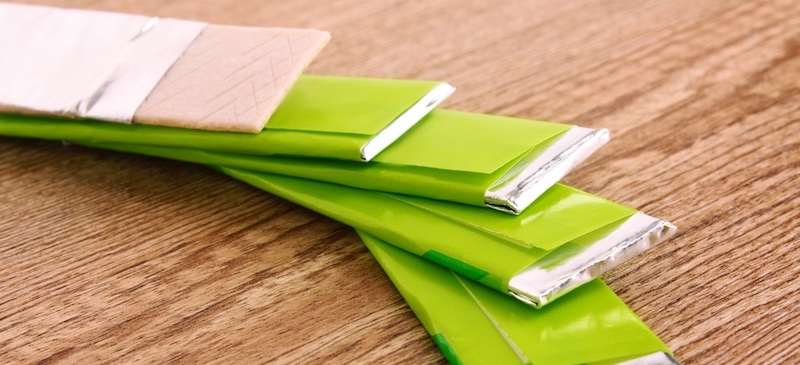This Dr. Axe content is medically reviewed or fact checked to ensure factually accurate information.
With strict editorial sourcing guidelines, we only link to academic research institutions, reputable media sites and, when research is available, medically peer-reviewed studies. Note that the numbers in parentheses (1, 2, etc.) are clickable links to these studies.
The information in our articles is NOT intended to replace a one-on-one relationship with a qualified health care professional and is not intended as medical advice.
This article is based on scientific evidence, written by experts and fact checked by our trained editorial staff. Note that the numbers in parentheses (1, 2, etc.) are clickable links to medically peer-reviewed studies.
Our team includes licensed nutritionists and dietitians, certified health education specialists, as well as certified strength and conditioning specialists, personal trainers and corrective exercise specialists. Our team aims to be not only thorough with its research, but also objective and unbiased.
The information in our articles is NOT intended to replace a one-on-one relationship with a qualified health care professional and is not intended as medical advice.
Microplastics in Chewing Gum: 1 Piece Could Release Thousands of Particles into Saliva
April 12, 2025

Microplastics, tiny plastic particles less than five millimeters in size, have become a pervasive environmental pollutant, infiltrating various aspects of daily life. Recent research now has uncovered a surprising source of microplastic exposure: chewing gum.
A pilot study presented at the American Chemical Society’s spring 2025 meeting revealed that chewing gum can release hundreds to thousands of microplastic particles into saliva, which are then potentially ingested.
Study: Chewing gum releases microplastics
The study investigated the release of microplastics from both natural and synthetic chewing gums. Researchers found that chewing a single piece of gum could release hundreds to thousands of microplastic particles into the chewer’s saliva.
These particles originate from the gum’s base, which often contains synthetic polymers. The findings suggest that regular gum chewers may be unknowingly ingesting significant amounts of microplastics.
Researchers from UCLA, led by Professor Sanjay Mohanty, conducted experiments involving a single participant who chewed seven pieces each of 10 different gum brands, encompassing both synthetic and natural varieties. Saliva samples were collected after chewing and analyzed using filtration and chemical analysis techniques, including microscopy, to quantify and identify microplastics.
To ensure accuracy, microplastics present in initial rinse samples were subtracted from those found in the chewing gum saliva samples. Researchers tested 10 popular chewing gum brands, encompassing both synthetic gums (made from plastic-based polymers) and natural gums (derived from plant-based materials like chicle).
The participant chewed each type of gum, and that person’s saliva was analyzed to quantify the number and types of microplastics released during chewing. The study focused on the initial minutes of chewing, when most microplastic release was expected to occur.
Key findings
- Microplastic release: On average, one gram of gum released approximately 100 microplastic particles, with some brands shedding up to 600 particles per gram. That means one piece of large gum could release more than 3,000 microplastic particles.
- Timing: The majority of microplastics were released within the first eight minutes of chewing (approximately 94 percent).
- Material composition: The particles included polymers, such as polyolefins, polyterephthalates, polyacrylamides and polystyrenes, materials commonly found in consumer plastics.
- Synthetic vs. natural gums: Both synthetic and natural gums released similar amounts of microplastics, averaging about 100 particles per gram.
- Annual exposure estimate: For individuals who chew around 180 pieces of gum annually, this could result in ingesting approximately 30,000 microplastic particles each year.
Dangers of microplastics
While the study did not establish a direct link between microplastic ingestion from gum and specific health issues, microplastics have been detected in various human tissues, including the lungs, bloodstream, placenta and brain. Their presence is associated with inflammation, DNA damage and organ dysfunction.
While the health risks from gum-derived microplastics are still being studied, experts advise caution, and the ingestion of microplastics is a growing concern due to potential health risks, including:
- Gastrointestinal issues: Microplastics may cause physical irritation to the gastrointestinal tract, leading to inflammation and discomfort.
- Chemical toxicity: These particles can absorb and carry environmental toxins, such as heavy metals and polycyclic aromatic hydrocarbons, which may be released into the body upon ingestion.
- Cellular damage: Studies have indicated that microplastics can cause oxidative stress and DNA damage, potentially leading to various health issues.
- Endocrine disruption: Certain chemicals leached from microplastics are known to interfere with hormonal functions, which could lead to metabolic disorders and reproductive health problems.
While definitive conclusions about the long-term health impacts are still being researched, these potential risks highlight the importance of minimizing microplastic exposure.
Is it safe to chew gum?
Given the study’s findings, it’s reasonable to question the safety of chewing gum. While occasional gum chewing may not pose a significant risk, frequent chewers might consider the potential for increased microplastic ingestion.
To reduce exposure:
- Limit gum consumption: Reducing the frequency of gum chewing can decrease the intake of microplastics.
- Dispose gum properly: Always dispose of gum in the trash to prevent environmental contamination.
- Choose alternatives: Opt for natural breath fresheners like mint leaves or parsley.
- Reduce plastic use: Adopt practices to lower overall plastic exposure, such as using reusable water bottles and avoiding plastic containers.
- Stay informed: As research evolves, staying updated on findings related to microplastics and health is advisable. Be mindful of other potential sources of microplastic exposure in daily life.
Conclusion
- The discovery that chewing gum can be a source of microplastic ingestion adds to the growing awareness of how pervasive these particles are in our environment.
- While more research is needed to fully understand the health implications, being mindful of gum consumption and seeking alternatives can help reduce potential risks.
- As we continue to uncover the extent of microplastic exposure, making informed choices becomes increasingly important for our health and well-being.








